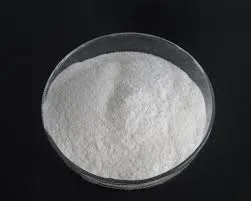
Out . 21, 2024 12:42 Back to list
HPMC Gel Preparation Process and Key Techniques for Effective Formulation
Preparation of HPMC Gel A Comprehensive Guide
Hydroxypropyl methylcellulose (HPMC) is a widely used cellulose derivative that has gained significant importance in various fields, including pharmaceuticals, food, and cosmetics. One of the innovative applications of HPMC is its use in gel formulations. HPMC gels are known for their unique properties, including biocompatibility, thickening ability, and gel-forming characteristics, making them ideal for various applications. This article aims to provide a comprehensive guide to the preparation of HPMC gel.
Understanding HPMC
HPMC is a semi-synthetic polymer derived from cellulose. It is non-toxic, biodegradable, and characterized by its ability to dissolve in cold water, providing a viscosity that can be adjusted based on the concentration used. HPMC is commonly utilized in drug delivery systems, where it improves the solubility and stability of active pharmaceutical ingredients.
Materials Required
To prepare HPMC gel, the following materials are essential 1. HPMC Powder The primary gelling agent. The viscosity grade can be selected based on the desired gel characteristics. 2. Distilled Water Used as the solvent to dissolve HPMC and form the gel. 3. Preservatives (optional) Depending on the formulation, preservatives such as benzalkonium chloride may be added to prevent microbial contamination. 4. Active Ingredients (if applicable) This could include drugs, fragrances, or other compounds that need to be incorporated into the gel.
Preparation Steps
1. Calculate the Required Concentration Determine the concentration of HPMC required for the specific application. Usually, concentrations range from 1% to 5%, but this can vary based on desired viscosity and application.
2. Heat Water (Optional) For easier dispersion of HPMC, it can be beneficial to heat the distilled water to about 70-80°C while stirring. However, note that HPMC can also hydrate in cold water, albeit more slowly.
3. Slowly Add HPMC to Water Gradually sprinkle the HPMC powder into the heated or room temperature distilled water while continuously stirring. This step is crucial to prevent clumping and ensure even dispersion. It is advisable to use a mechanical stirrer or a hand-held mixer for better results.
hpmc gel preparation

4. Allow Swelling After the HPMC is fully incorporated, allow the mixture to sit for about 30 minutes. During this period, the HPMC will swell, resulting in a thicker consistency.
5. Adjust pH (if necessary) Depending on the desired application and stability of incorporated active ingredients, the pH of the gel may need to be adjusted. Use a pH meter to check, and if necessary, incorporate citric acid or sodium hydroxide to achieve the desired pH.
6. Incorporate Preservatives and Active Ingredients If the gel is intended to include preservatives or active ingredients, add them slowly while stirring continuously to ensure uniform distribution.
7. Cooling If heat was used to hydrate the HPMC, allow the gel to cool to room temperature while stirring occasionally.
8. Final Homogenization After cooling, use a homogenizer if available to ensure that the gel is uniform and free of air bubbles. This step is particularly important for pharmaceutical applications where consistency is crucial.
9. Storage Transfer the HPMC gel into sterile containers to minimize contamination. Store the gel in a cool, dry place or refrigeration if necessary to prolong its shelf life.
Applications of HPMC Gel
HPMC gel has a broad range of applications. In pharmaceuticals, it serves as a medium for drug delivery, wound healing, and emulsifying agents. In cosmetics, HPMC gel is used for hair styling products, skin moisturizers, and as a thickener in various formulations. The food industry also utilizes HPMC as a thickener and stabilizer in sauces and dressings.
Conclusion
The preparation of HPMC gel is a relatively straightforward process that emphasizes the importance of careful measurement, proper hydration, and thorough mixing. By following these steps, a versatile gel can be created for numerous applications, showcasing the flexibility and utility of HPMC as a gelling agent. Understanding the properties and preparation methods of HPMC gel can lead to innovative solutions across various industries.
-
The Widespread Application of Redispersible Powder in Construction and Building Materials
NewsMay.16,2025
-
The Widespread Application of Hpmc in the Detergent Industry
NewsMay.16,2025
-
The Main Applications of Hydroxyethyl Cellulose in Paints and Coatings
NewsMay.16,2025
-
Mortar Bonding Agent: the Key to Enhancing the Adhesion Between New and Old Mortar Layers and Between Mortar and Different Substrates
NewsMay.16,2025
-
HPMC: Application as a thickener and excipient
NewsMay.16,2025
-
Hec Cellulose Cellulose: Multi functional dispersants and high-efficiency thickeners
NewsMay.16,2025







